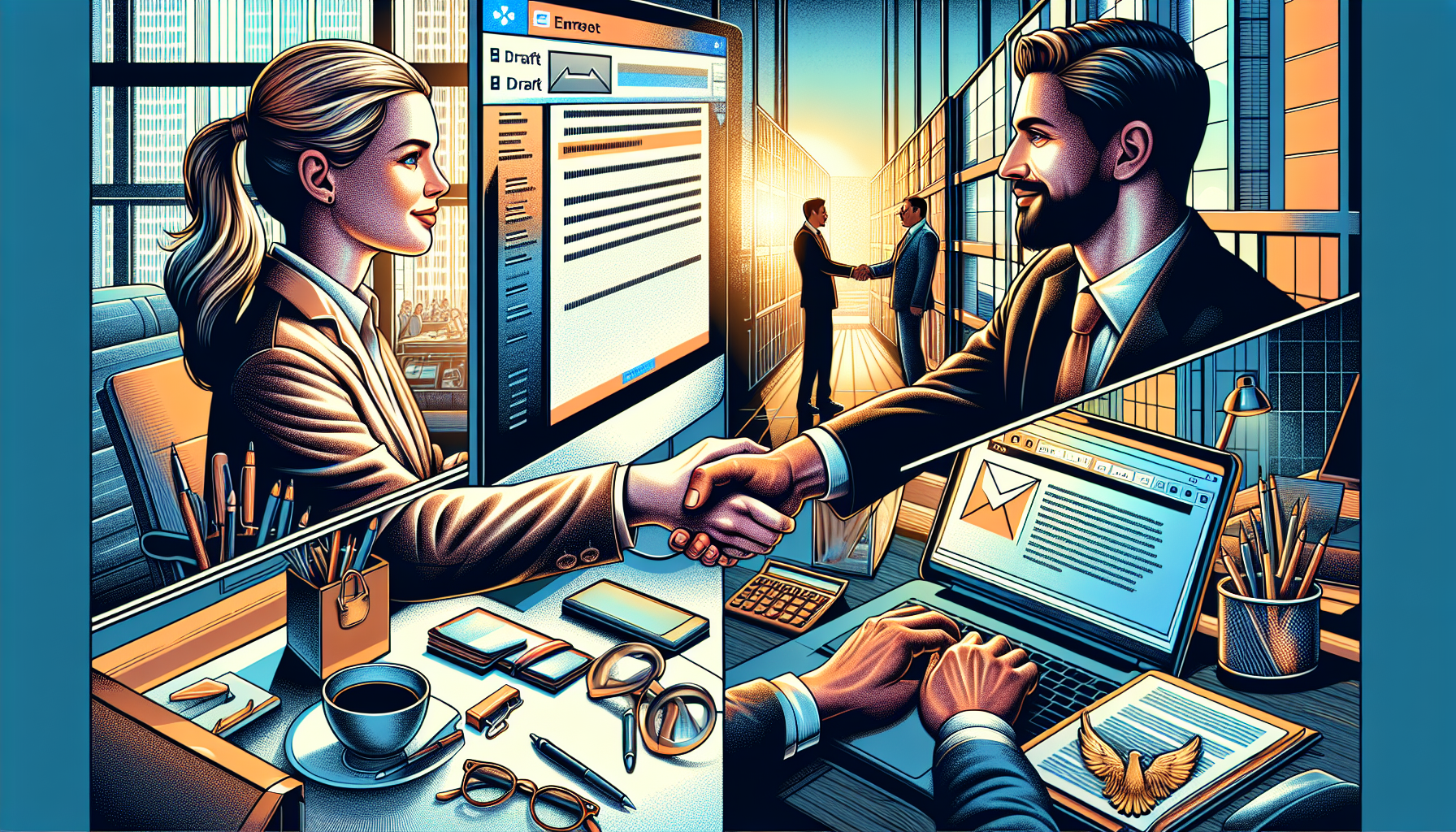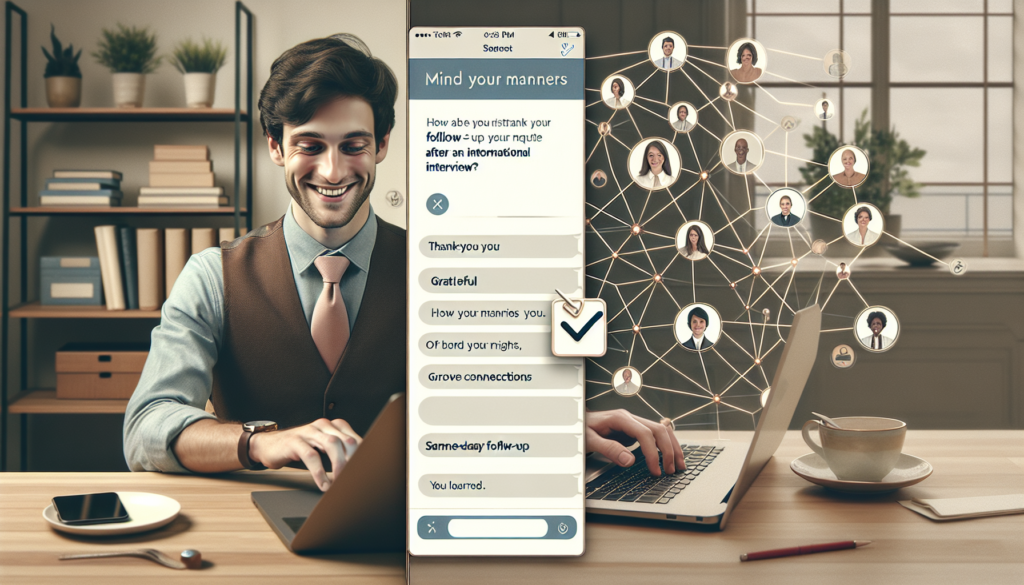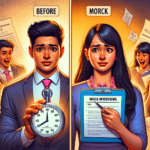Mind Your Manners: The Essential Guide to Following Up After an Informational Interview (2025)
Meta: Learn the professional etiquette of following up after an informational interview, including timing, thank-you note templates, and best practices to build lasting professional relationships.
Did you know that 91% of hiring managers consider thank-you notes when evaluating candidates, yet only 43% of job seekers actually send them? I’ve seen countless promising connections fizzle simply because someone forgot the crucial follow-up! Whether you’ve just had an enlightening conversation with an industry veteran or picked the brain of a potential mentor, what you do after an informational interview can be just as important as the meeting itself. Let’s dive into the art of the perfect follow-up!

The Golden Rules of Post-Interview Follow-Up
When it comes to following up after an interview, timing is everything. You want to strike while the iron is hot, but not come across as overeager. That’s why the 24-hour rule is your best friend. It’s the sweet spot that shows you’re enthusiastic and professional.
But what exactly should you include in that follow-up? Well, a professional follow-up should always express gratitude, reiterate your interest in the position, and briefly highlight why you’re the perfect fit. It’s like a mini-recap of your best moments in the interview.
Now, let’s talk about what not to do. Avoid being too casual, sending multiple follow-ups in a short period, or worse, not following up at all. These are surefire ways to leave a less-than-stellar impression.
Digital vs. Handwritten Thank-You Notes
In this digital age, you might be wondering if a handwritten note still has a place. The truth is, both digital and handwritten notes have their merits. An email is quick and ensures timely delivery, while a handwritten note adds a personal touch that can make you stand out. The key is to know your audience and choose accordingly.
Crafting the Perfect Thank-You Message
So, what makes a thank-you email effective? It’s all about hitting the right notes. Start with a clear subject line, address the interviewer properly, express sincere gratitude, and reinforce your interest in the role. Don’t forget to proofread!
Personalization is crucial. Remember that anecdote the interviewer shared? Or that project they mentioned? Referencing specific conversation points shows you were actively listening and helps jog their memory about your interaction.
Here’s a quick template to get you started:
“Dear [Interviewer’s Name],
Thank you for taking the time to meet with me yesterday regarding the [Position] role. I enjoyed learning more about [specific topic discussed] and was particularly excited about [another point of discussion].
[Add a sentence about how your skills align with their needs]
I look forward to hearing about the next steps in the process. Please don’t hesitate to contact me if you need any additional information.
Best regards,
[Your Name]”
Building Long-Term Professional Relationships
Remember, the goal isn’t just to land this job; it’s to build meaningful professional connections. LinkedIn is a great tool for this. Connect with your interviewer (if appropriate in your industry) and engage with their content occasionally. But don’t overdo it – you want to stay on their radar, not become a nuisance.
When it comes to following up without being pushy, think quality over quantity. Instead of repeatedly asking about the job status, share relevant industry news or congratulate them on company achievements.
Leveraging Your Informational Interview Network
Informational interviews can be goldmines for career opportunities. Keep your network informed about your career progress and achievements. This way, when an opportunity arises, you’re already top of mind.
And don’t forget, networking is a two-way street. Offer to help your contacts when you can. It could be as simple as sharing an interesting article or making an introduction. When you do need to ask for help, be specific about what you need and always express gratitude.
Digital Etiquette in Professional Follow-Ups
In the digital world, there are some unspoken rules. On social media, keep it professional. Your Instagram vacation photos are probably not relevant to your job search.
When it comes to email, timing matters. Sending a follow-up at 2 AM might not give the best impression. Use a professional email format, and consider the recipient’s time zone if you’re applying internationally.
Lastly, don’t underestimate the power of professional communication platforms and digital networking tools. They can help you stay organized and make meaningful connections. Just remember, while these tools are incredibly useful, they’re no substitute for genuine, personalized communication.

Conclusion
Remember, a well-executed follow-up can transform a single conversation into a lasting professional relationship. Take action within 24 hours, personalize your message, and focus on building genuine connections. Your next career opportunity might just come from maintaining these valuable relationships!




